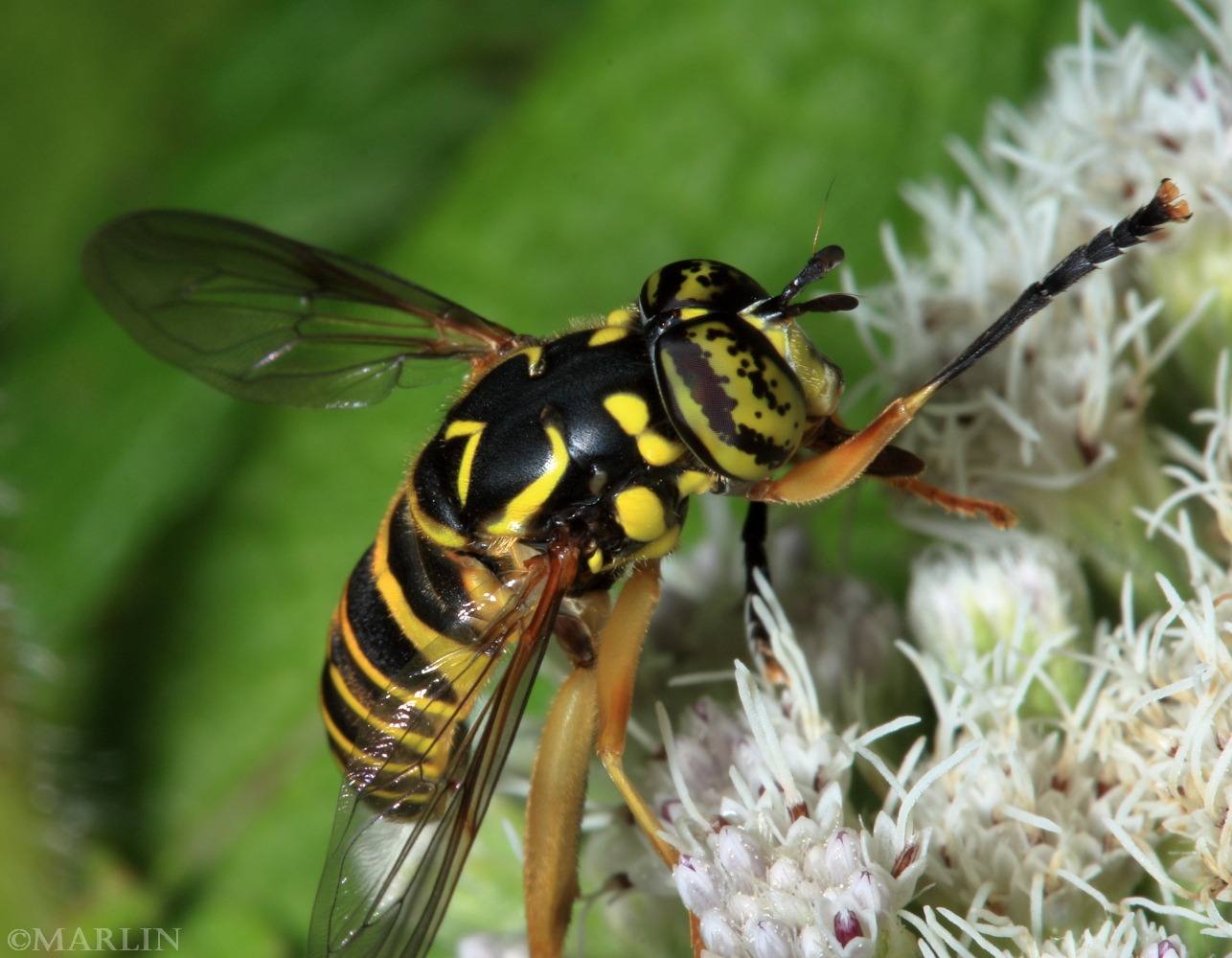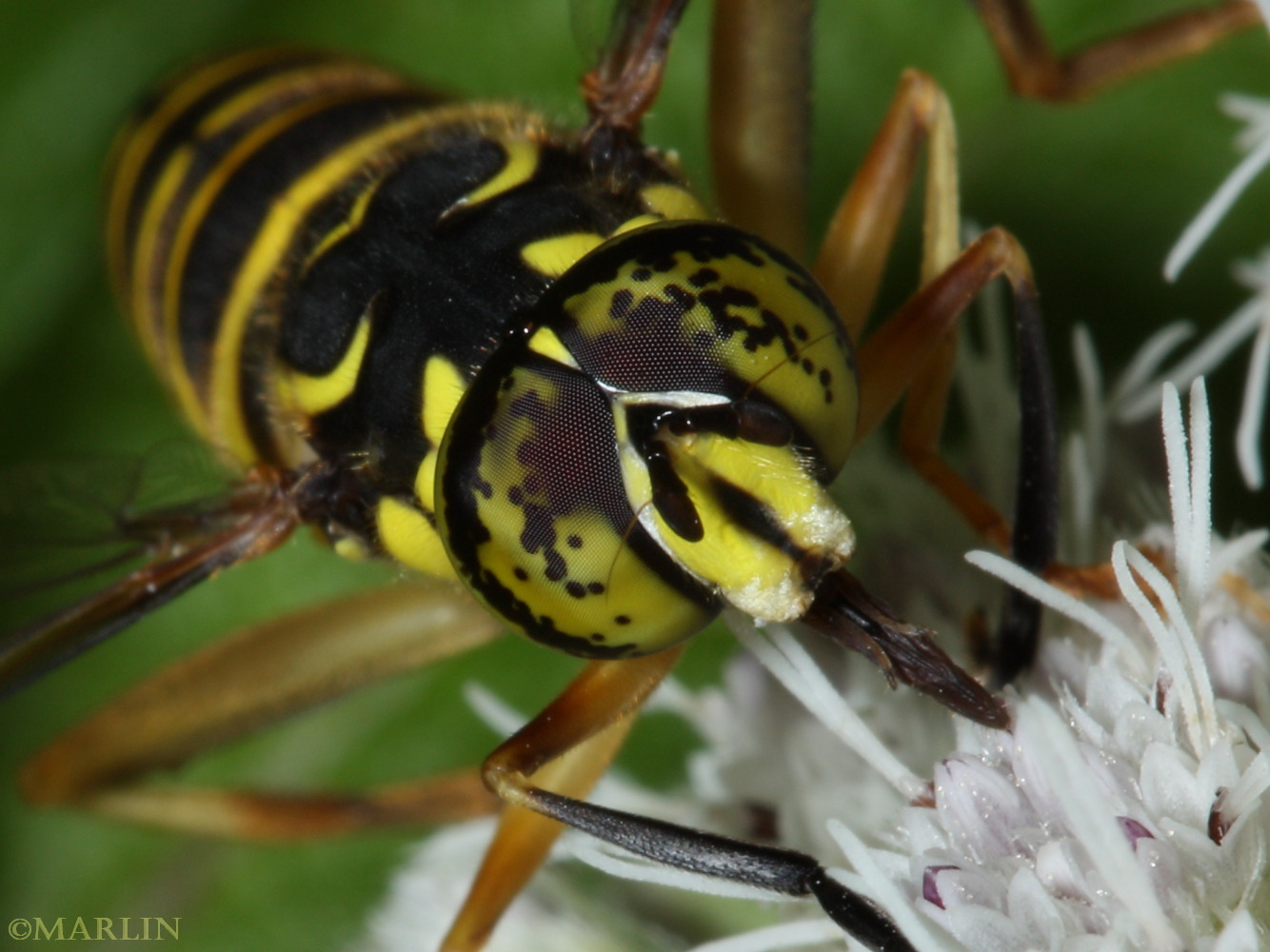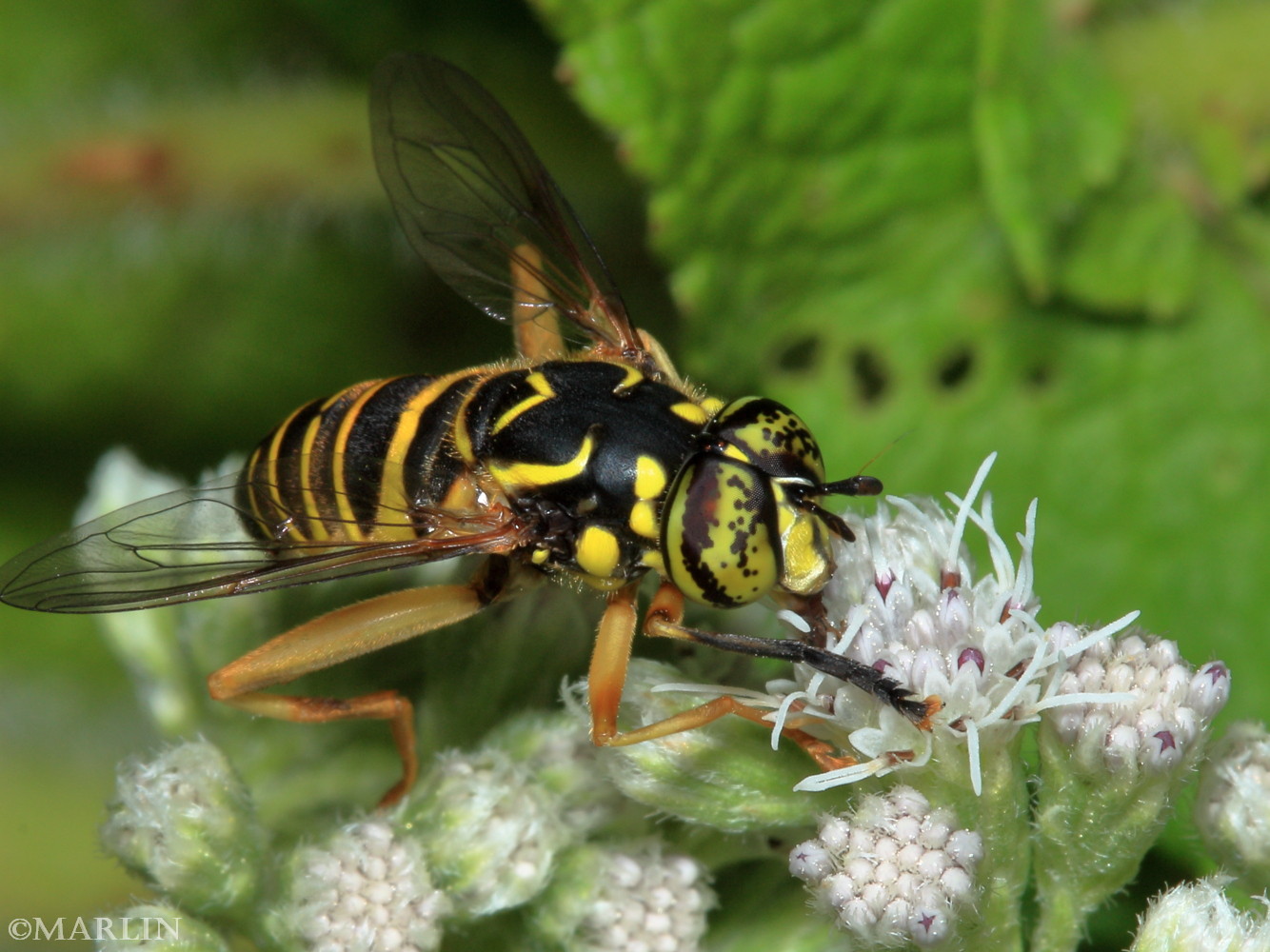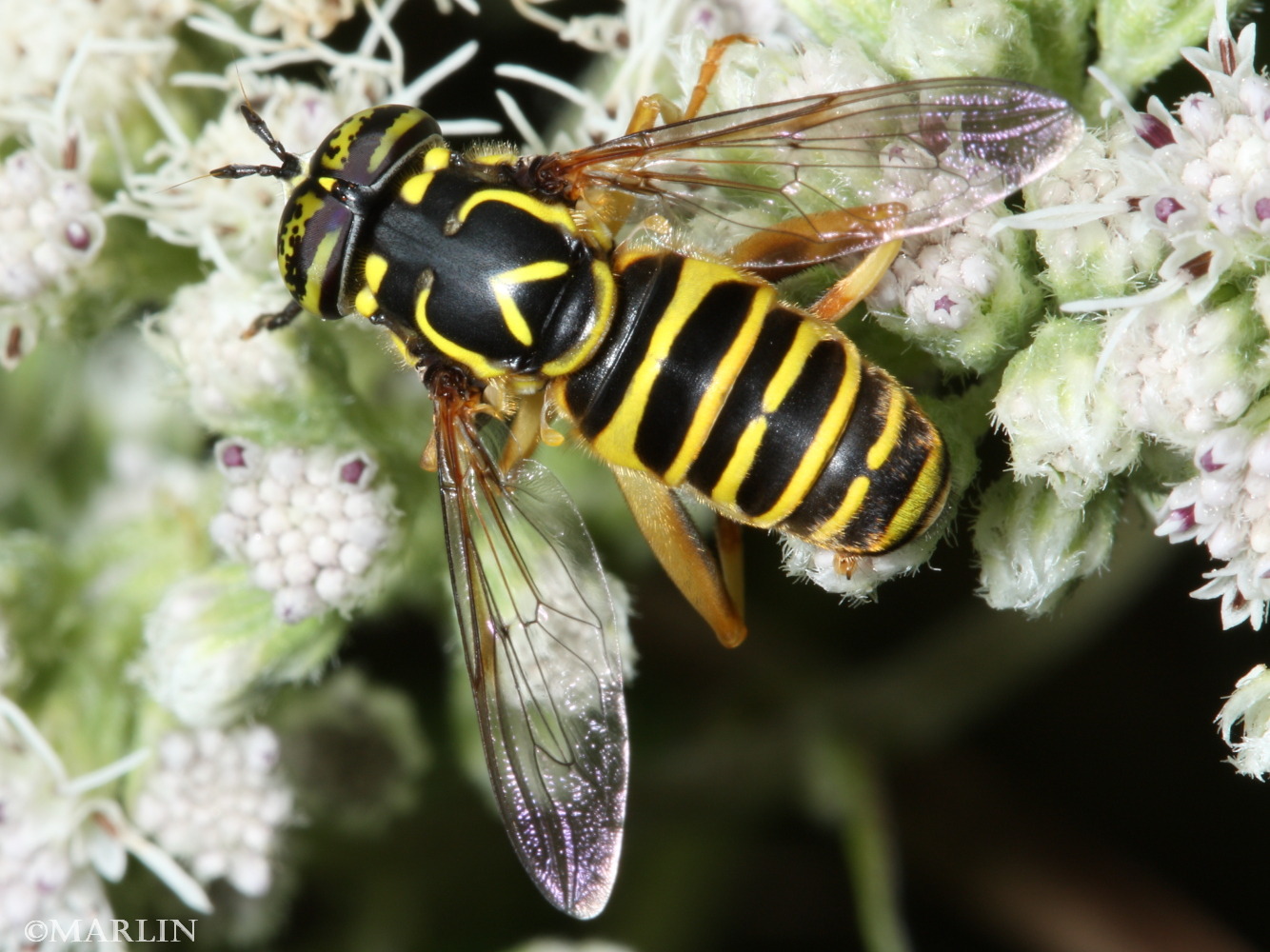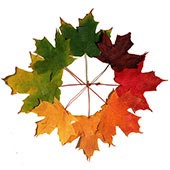Syrphid Fly – Spilomyia longicornis
Live adult Syrphid Flies photographed at Allegheny National Forest near Marienville, Pennsylvania. Like all true flies, this creature has only two wings and no stinger. It has one of the loudest flying buzzes I’ve ever heard- you can hear them coming 50 feet away it seems. I love that sound!
Pollen covers this fly’s snout like cake frosting, like he just came out of a 1980s discotheque bathroom, if you catch my drift.
The family Syrphidae, commonly known as hoverflies or flower flies, plays a crucial role in agricultural ecosystems by serving as efficient predators of aphids. Aphids are notorious agricultural pests that can cause significant damage to crops, making their control essential for ensuring food security and reducing the need for chemical pesticides.
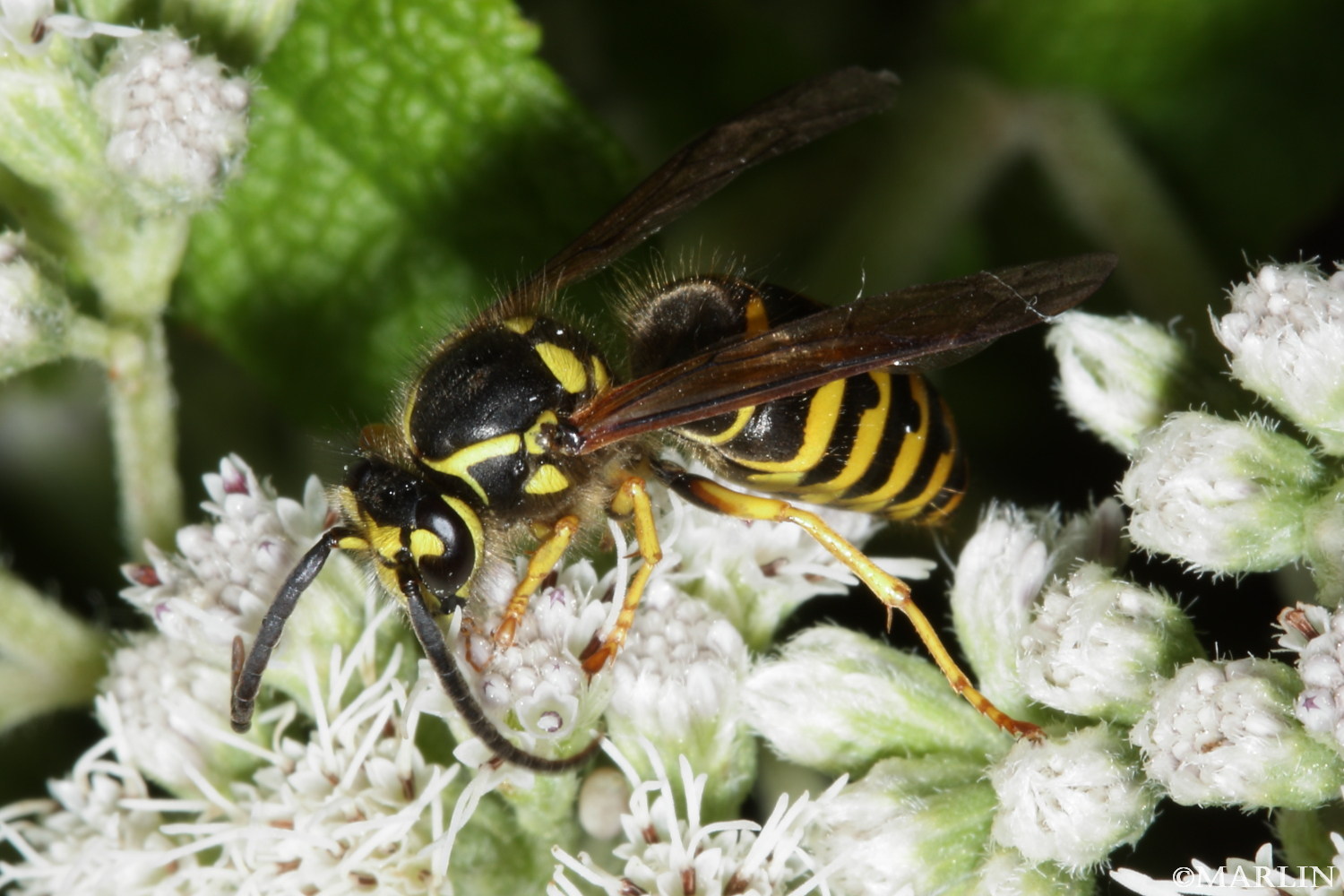 Case in point. Spilomyia is such a good yellowjacket mimic that I had this one single shot of a downy yellowjacket (above) in the same folder with the fly pics – for years I did not notice it.
Case in point. Spilomyia is such a good yellowjacket mimic that I had this one single shot of a downy yellowjacket (above) in the same folder with the fly pics – for years I did not notice it.
I just love these flies. What better way to spend a summer afternoon that stalking these increasingly-rare creatures about in a flower garden?
Like many insects, this fly has 3 simple eyes (ocelli) between two compound eyes
North American Insects & Spiders
